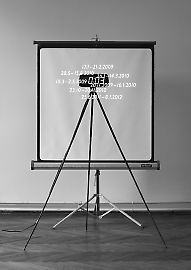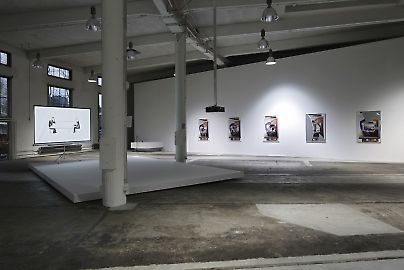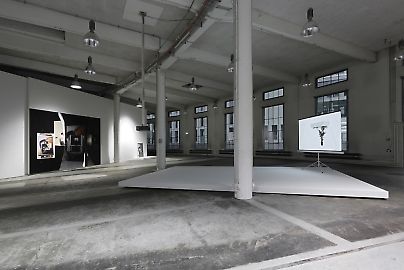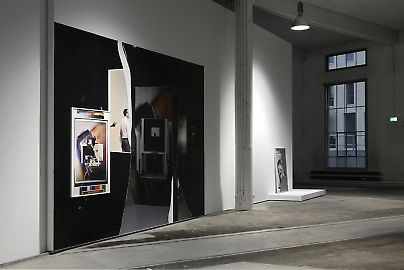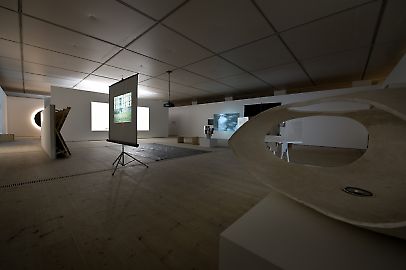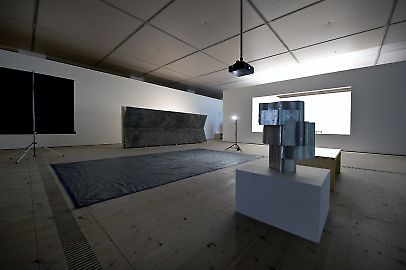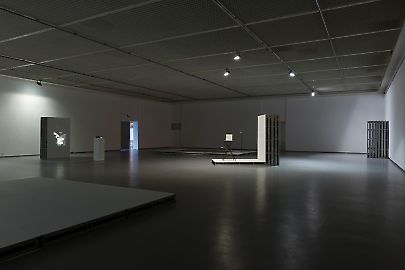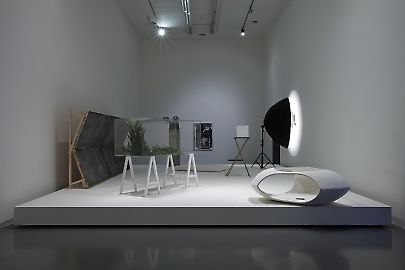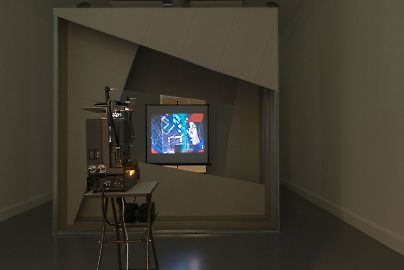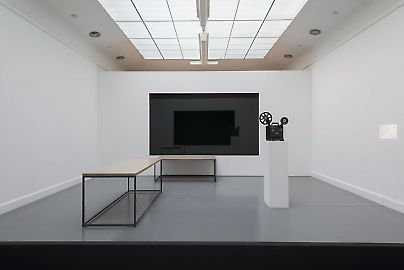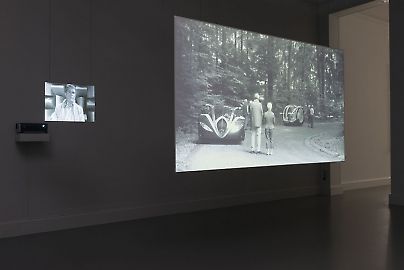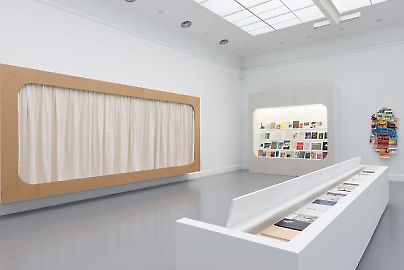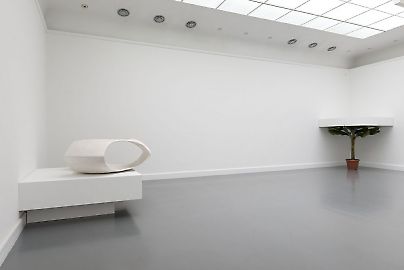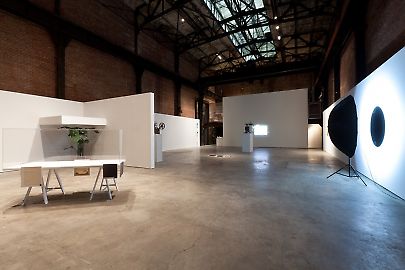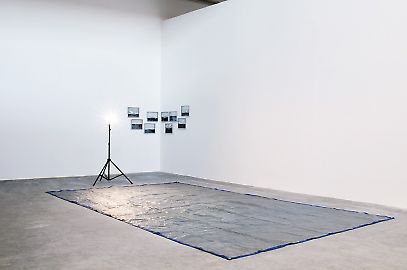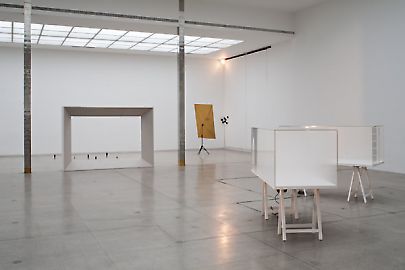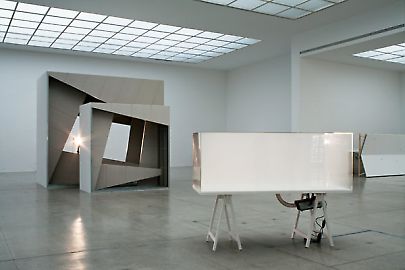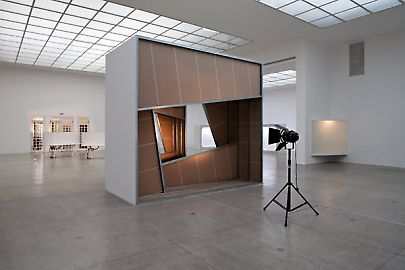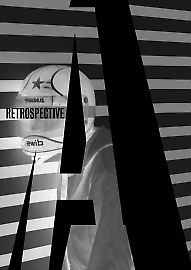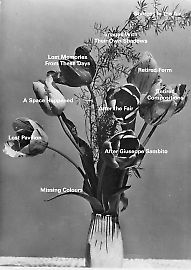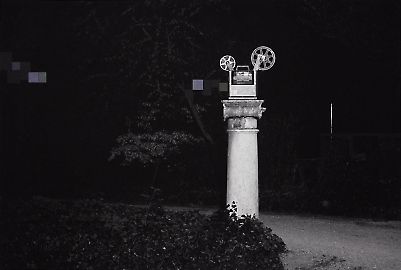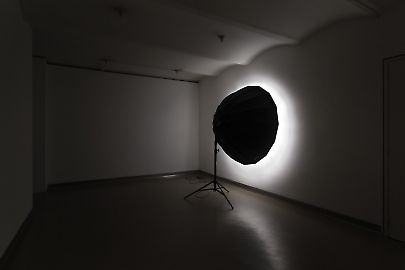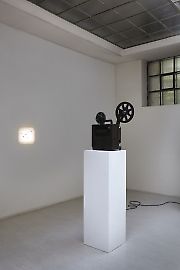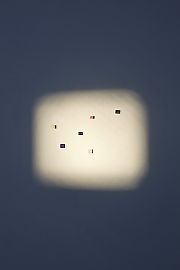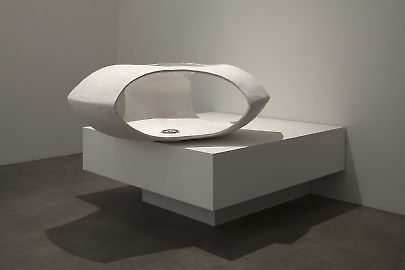David Maljkovic
Poster for Secession, 2011
inkjet print by David Maljković and Toni Uroda
84,1 x 118,9 cm, Ed. 30
Poster for Secession, 2011
inkjet print by David Maljković and Toni Uroda
84,1 x 118,9 cm, Ed. 30
Temporary Projections Cycle, 2011
9 paintings in oil and chalk on canvas behind umbrella
dimension variable (260 x 220 x 160 cm)
Temporary Projections Cycle, 2011
projector, 6 paintings in oil on canvas, each 1,1 x 1,1 cm
dimension variable (187 x 30 x 190 cm)
Temporary Projections Cycle, 2011
projector, 6 paintings in oil on canvas, each 1,1 x 1,1 cm
dimension variable (187 x 30 x 190 cm)
Lost Pavilion, 2009
Acrylstal, speaker, cd player, pedastals and seven collages on paper
22 x 53 x 53 inches
In his installations, videos, and collages, David Maljković (born 1973 in Rijeka, lives and works in Zagreb) is concerned with aspects of the eventful history of his country. The far-reaching consequences of the transformation from a communist to a capitalist social form and the linked economic and cultural impacts form the subtext of his artistic production. His works often show abandoned buildings and monuments of the 1960s and 1970s, which impressively reflect the promise of a better future, while at the same time evoke failure due to their currently ruinous state, adding a melancholy touch. In taking this step, the artist consciously uses examples where the ideas of a universal, modernistic progress are linked to a specific understanding of socialism as a potentially radical, experimentally modernistic concept. The combination makes clear the exemplary outlines of his approach, which equally counts the inclusion of research, as well as the interweaving of past, future, and present.
He participated at the 11th Gwangju Biennale (2016), the 56th Venice Biennale (2015) and the 29th São Paulo Biennial (2010).
His work is represented in the collections of Kunstmuseum Liechtenstein, MUMOK (Vienna), Tate Collection (London), Centre Pompidou (Paris), Museum of Modern Art (New York), Ludwig Museum of Contemporary Art (Budapest) and Stedelijk Museum (Amsterdam).


